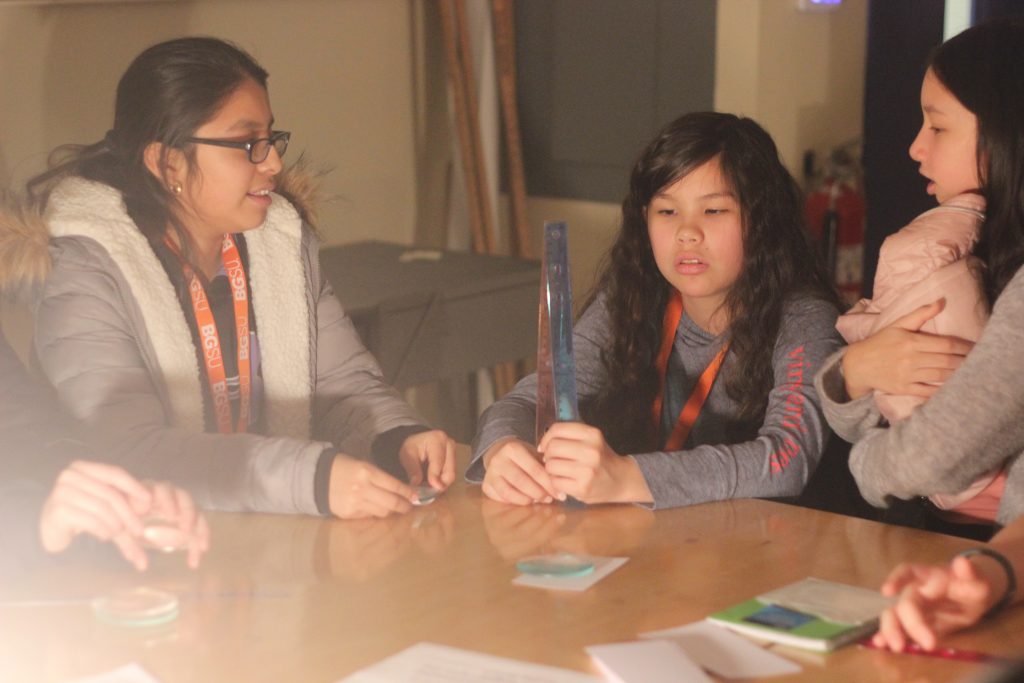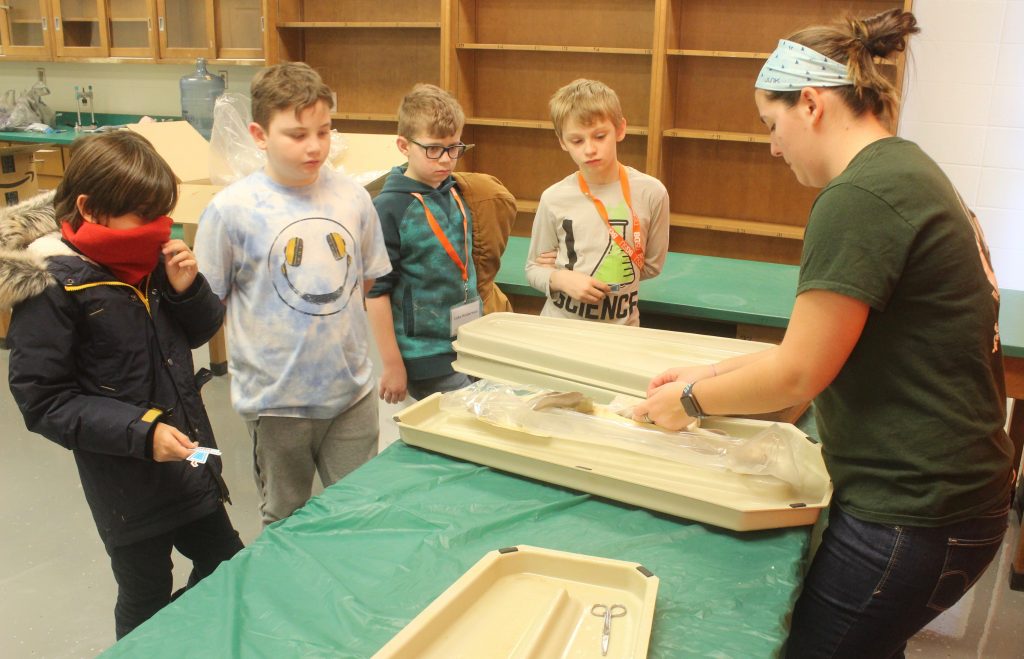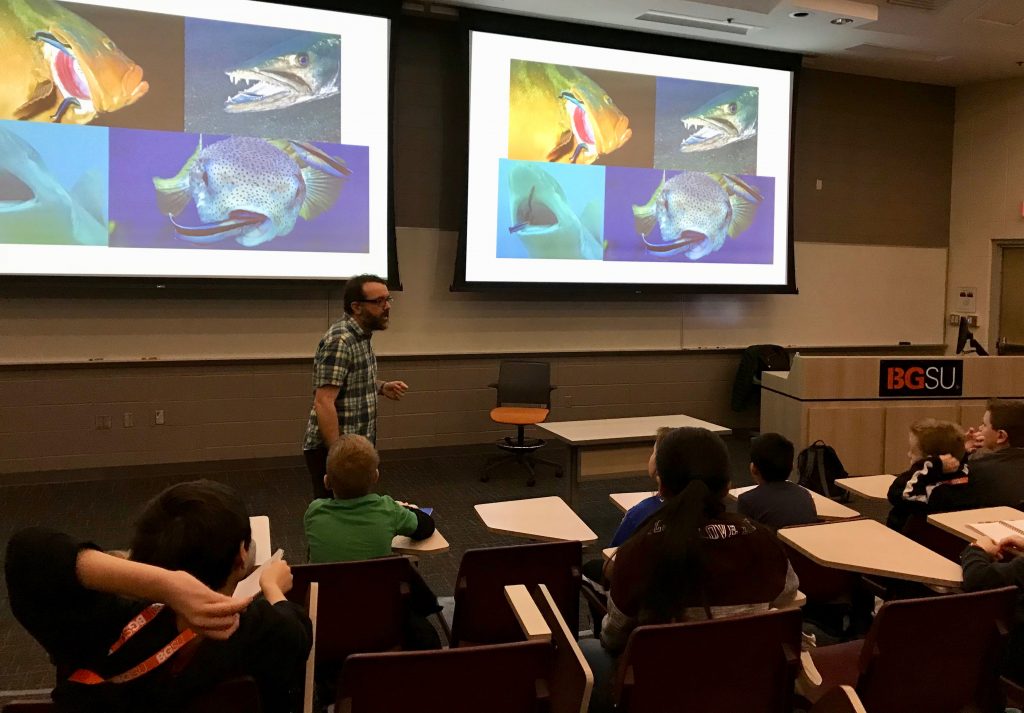By DAVID DUPONT
BG Independent News
Kevin Neves came to the Kids’ Tech University convinced he’d dazzle his young students with knowledge about fish.
He’s the one who came away dazzled. “I thought I’d be here blowing their minds,” the Bowling Green State University assistant teaching professor in the Department of Biological Sciences said. “Maybe it’s just the ocean is so inspiring, but they knew their stuff.”

He projected a photo of a fish with its eyes behind what looked like a fighter plane cockpit, and asked if anyone knew what species it was. If they didn’t know, they chimed in with names that could have fit.
Glass fish, one calls out. X-Ray fish, says another. Stargazer!
Before one kid nails it. “Barrel-eye.”
Neves knew he could count on at least one kid to know the answer.
Neves was the guest lecturer for the second session of this year’s Kids’ Tech University. The program, in its ninth year, brings students age 9 to 12 for both a talk in the morning, and then hands on activities in the afternoon.
Topics like this past Saturday’s on fish are meant to hook kids on science.

Paul Morris, a BGSU biology professor who leads the program said: “In this age group we can get them interested in science by having them listen to and ask questions of someone who actually does science. I think that’s key. We’re on a university campus. They get to be big kids.” They get to be university science students for a day.
They use the same facilities and eat in the same dining halls that undergraduates use. For them that’s “cool,” Morris said.
“I like that they are so engaged, so interested,” Neves said. “When I do a college lecture I get a bunch of empty stares back. Here they’re super engaged, literally hanging on every word.”

He talked about common fish like the gold fish, and why they shouldn’t be released into ponds and lakes. They quickly take over, he explained.
He also talked about the rarest species, the Devil’s Hole puff fish that lives in a single small water body in California. It was almost wiped out when people threw trash in the water, and another time they had to be brought to an aquarium when the hole all but dried up during a drought.
Neves talked about lung fish, an ancient precursor to amphibians, and about the most deadly fish, the venomous rock fish.
The first week, the students heard about eyes from Mile Brujic, from the Premier Vision Group in Bowling Green.
Morris said one student asked a question about compound eyes that stumped the expert. He hadn’t thought about that since graduate school, according to Morris.
The students came away with new insights.

Noah Edwards was impressed to learn about all the parts of the eyes that enabled him to see.
Several others said they didn’t know that the pupil of the eye was just a hole.
Brandt Beaverson, of Bowling Green, enjoyed being able to work on experiments. During the work in the physics labs learning of wave lengths, he folded a paper boat, and watched how it bobbed on top of a tank of water.
It’s not only kids who enjoy the experience. Lois Luoma, a retiree, said she was invited to attend a lecture a number of years ago and was so impressed, she asked if she could pay $5 a week to continue attending. (The cost for students is $30 for the four sessions.)
Morris asked if she wanted to help with registration. That was at the start of the program, Morris said. Luoma has been a regular ever since.
The Kids’ Tech University takes a month-long break before resuming for the last two sessions: Andrew Layden, chair or the BGSU Department of Physics and Astronomy, will talk about the search for exoplanets on March 28 and Beth Posta, curator in Behavioral Husbandry at the Toledo Zoo, will talk about “A Wild Time at the Zoo: Adventures in Environmental Enrichment,” on April 18.
Morris said there’s space for more students in these final two sessions. He can be reached at pmorris@bgsu.edu.

